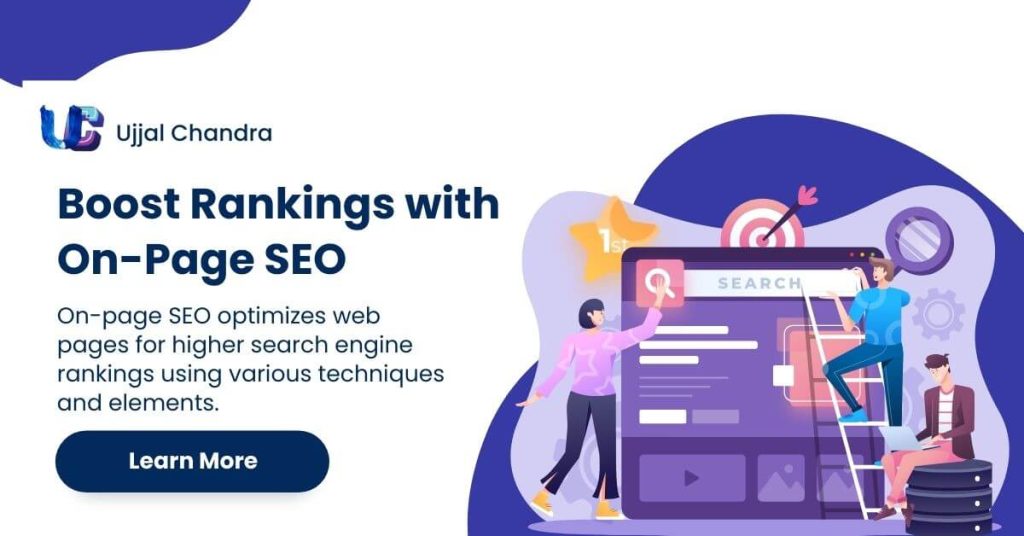Are you struggling to get your website noticed by search engines? Do you want to attract more organic traffic to your site and improve your online visibility? If so, you need to master the best practices for on-page SEO optimization. On-page SEO is the practice of optimizing individual pages on your website to improve their search engine rankings and attract more relevant traffic.
In this guide, we’ll cover everything you need to know about on-page SEO, including optimizing your HTML tags and enhancing your content to boost your website’s search engine rankings. We’ll explore the key principles of on-page optimization and provide you with practical tips and strategies to help you improve your site’s visibility in search engine results.
Whether you’re a beginner or an experienced SEO practitioner, this guide will provide you with the knowledge and tools you need to take your on-page SEO to the next level. So, let’s get started and discover how to optimize your website for search engines!
Why On-Page Optimization is Important
On-page SEO is a critical component of any successful search engine optimization strategy. It refers to the process of optimizing individual web pages on your website to improve their search engine rankings and attract more relevant traffic. By incorporating best practices for on-page SEO, you can ensure that your website is properly structured and optimized for search engines, making it more likely to appear at the top of search engine results pages (SERPs) and attract potential customers.
Best practices for on-page SEO optimization include optimizing your HTML tags, creating high-quality content, and ensuring that your website’s structure and navigation are user-friendly. By following these best practices, you can improve your website’s search engine rankings and attract more organic traffic to your site.
One of the key benefits of on-page SEO is that it helps ensure that your website’s content is relevant and useful to your target audience. By optimizing your content with relevant keywords and providing high-quality information, you can attract more potential customers and keep them engaged on your site.
And also on-page SEO helps improve your website’s visibility to search engine crawlers by optimizing your HTML tags and ensuring that your website’s structure is easy to navigate. This makes it easier for search engine crawlers to index your site and rank it higher in search engine results pages.
The importance of on-page SEO cannot be understated. By following best practices and optimizing individual pages on your website, you can improve your website’s search engine rankings, attract more relevant traffic, and ultimately grow your business online.
The Importance of Keyword Research for On-Page SEO
Keyword research is a crucial component of on-page SEO, as it helps you identify the most relevant and high-traffic search terms to target in your content. By selecting the right keywords, you can increase your chances of ranking higher in search engine results pages (SERPs) and attracting more qualified traffic to your website.
To conduct effective keyword research, you should start by brainstorming a list of potential keywords that are relevant to your business, products, or services. Then, you can use various tools such as Google Keyword Planner, SEMrush, or Ahrefs to analyze the search volume, competition, and other metrics of each keyword.
When selecting the keywords to target, you should consider factors such as relevance, search volume, competition, user intent, and long-tail vs. short-tail keywords. It’s generally advisable to choose a mix of both broad and specific keywords that align with your content and audience’s interests.
By incorporating the best practices for keyword research into your on-page SEO strategy, you can increase your website’s visibility, relevance, and engagement with your target audience.
Content Optimization
On-page SEO places significant importance on content, which search engines rely on to gauge a website’s relevance and quality for specific search queries. To optimize content, it is crucial to create engaging, high-quality, and relevant content that is correctly optimized for search engines.
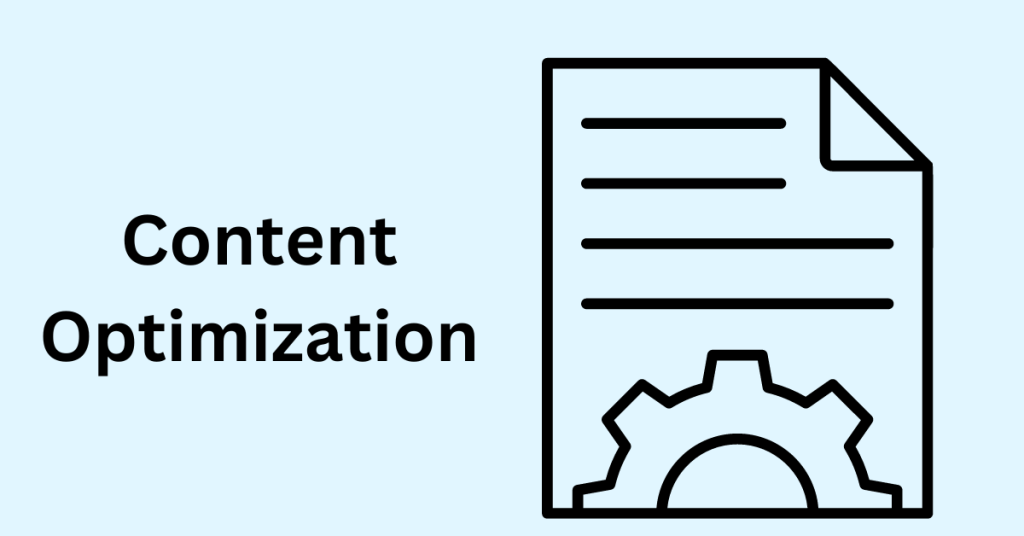
The ultimate goal is to increase a website’s visibility and attract more organic traffic. In this section, we’ll explore the key principles of content optimization and provide you with practical tips and strategies to help you optimize your content for search engines.
Best Practices for Optimizing Content for Search Engines
When it comes to optimizing your website’s content for search engines, following best practices for on-page SEO optimization is crucial. The first and most important step is to conduct thorough keyword research to identify the keywords and phrases that your target audience is searching for. Once you have identified your target keywords, you can begin incorporating them into your content in a strategic manner.
One of the best practices for optimizing content is to ensure that it is high-quality and relevant to your target audience. This means creating informative, engaging, and well-written content that provides value to your readers. In addition to being well-written, your content should also be easy to read and scannable, with clear headings and subheadings that break up the content and make it more digestible.
Using internal and external links strategically is another important aspect of on-page SEO optimization for content. Internal links help to establish a clear hierarchy on your website and make it easier for search engine crawlers to index your pages. Meanwhile, external links to high-quality sources can help to boost your website’s credibility and authority in the eyes of search engines.
The length of your content also plays an important role in on-page SEO optimization. Longer-form content tends to perform better in search engine rankings, but it’s important to ensure that your content remains high-quality and relevant, regardless of its length.
Lastly, it’s crucial to optimize your content’s meta information, such as the title tag and meta description. Your title tag should be descriptive and include your target keyword, while your meta description should provide a brief summary of your content and encourage users to click through to your page.
By following these best practices for on-page SEO optimization, you can help ensure that your website’s content is properly structured and optimized for search engines, making it more likely to rank highly in search engine results pages (SERPs) and attract potential customers.
Keyword Placement and Density
To achieve the best practices for on-page SEO optimization, you need to strategically place your target keywords throughout your content. This is called keyword placement, and it’s crucial for helping search engines understand the topic of your content. Your target keywords should appear in key locations like the title tag, meta description, headers, and body of your content. However, you need to be careful not to overuse your keywords, as this can be seen as spammy and lead to penalties.
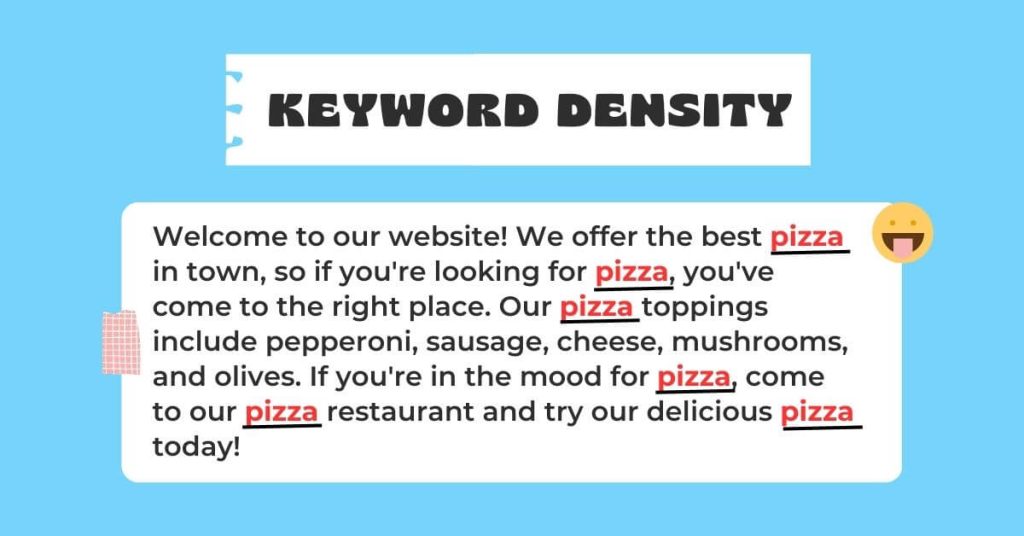
Another important aspect of keyword optimization is keyword density, which refers to the number of times your target keywords appear relative to the total word count. To avoid keyword stuffing, aim for a density of around 1-2%. Additionally, using variations of your target keywords, known as LSI keywords, can help improve the context of your content and increase its relevance and ranking potential.
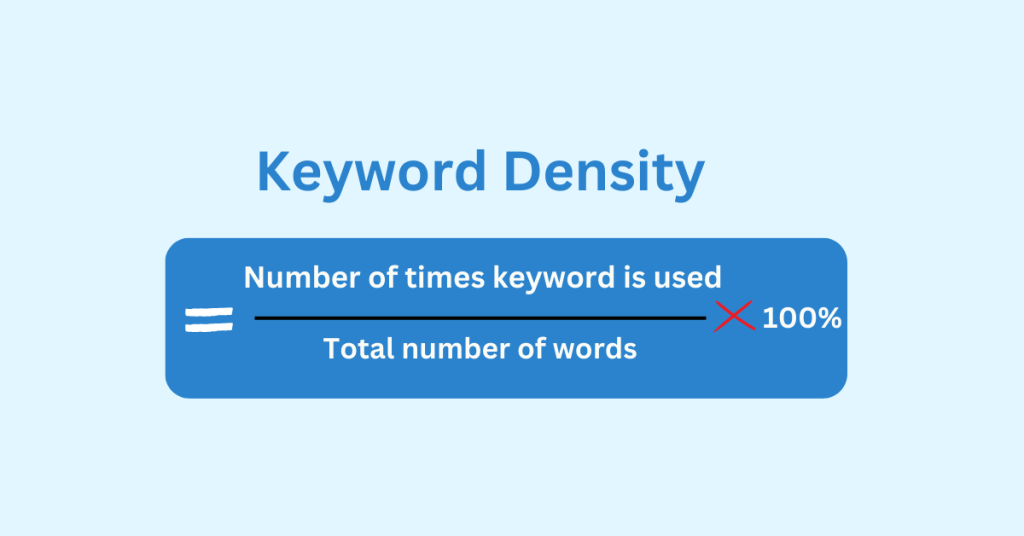
By incorporating strategic keyword placement and density into your content optimization, you can ensure that your content is properly optimized for search engines. This, in turn, can improve your search engine rankings, attract more potential customers to your website, and ultimately grow your business.
Importance of Headings and Subheadings
Headings and subheadings are important elements of content optimization as they help organize your content and make it easier for both users and search engines to understand the structure of your content.
HTML tags like H1, H2, H3, and so on are used to designate different levels of headings within your content. The H1 tag is typically used for the main title of your page or post, while H2 tags are used for subheadings within your content. H3 tags are used for subheadings within H2 sections, and so on.
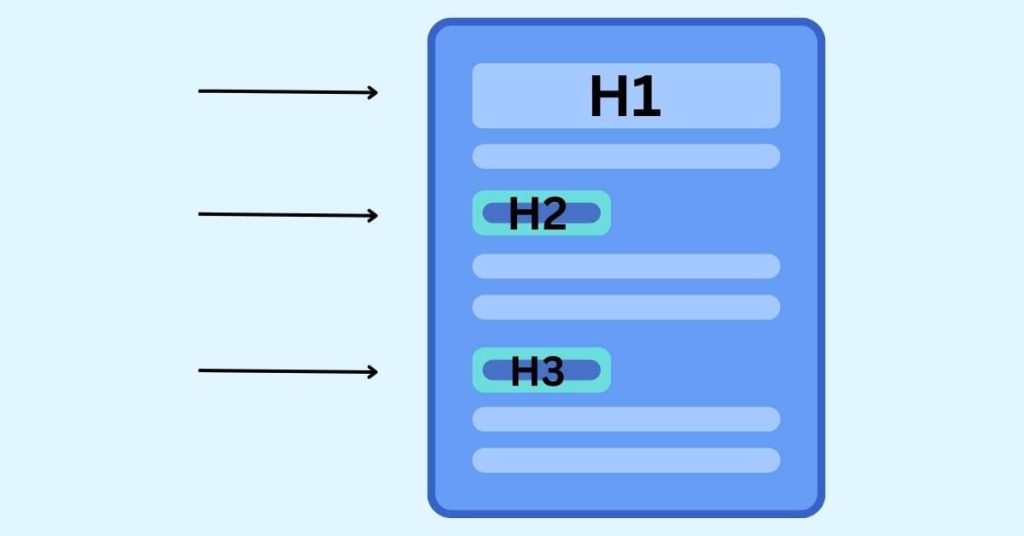
Strategically using headings and subheadings in your content can help break up the content into easily digestible sections, making it easier for users to skim and find the information they need. This can help reduce your website’s bounce rate and keep users on your page longer.
From an SEO perspective, headings and subheadings are also important because they provide clues to search engines as to what your content is about. Search engines use headings and subheadings to understand the hierarchy and structure of your content and to determine its relevance to a given search query.
When creating headings and subheadings for your content, it’s important to use them strategically and to include your target keywords whenever possible. This can help improve the relevance of your content to search queries and increase your chances of ranking higher in search engine results pages.
So, Headings and subheadings are a crucial element of on-page SEO optimization, as they help structure your content, improve readability, and provide important signals to search engines. By using headings and subheadings strategically and including your target keywords, you can improve the user experience and increase your chances of ranking higher in search engine results pages. These are the best practices for on-page SEO optimization.
Using Images and Videos in Content
Using images and videos in your content is considered one of the best practices for on-page SEO optimization. They are not only effective in breaking up text-heavy pages and making your content more shareable on social media platforms, but they can also have a significant impact on your website’s search engine optimization and user engagement.
From an SEO perspective, optimizing your images and videos with relevant file names, alt tags, and captions can provide additional opportunities to rank for relevant keywords. By doing so, you are giving search engines more context about the content of your media, which can improve your chances of ranking for relevant search queries.
When using images in your content, it’s important to ensure that they are high-quality and relevant to the content on the page. This can help improve the user experience and increase the time users spend on your page, which can, in turn, improve your search engine rankings. Additionally, optimizing image file sizes and formats can help improve the loading speed of your website, which is an important factor in both user experience and search engine rankings.
Similarly, using videos in your content can also provide additional opportunities to engage users and improve your search engine rankings. Videos can help demonstrate complex concepts, provide visual interest, and improve the overall user experience of your website. Additionally, video content can be optimized with descriptive titles, tags, and transcripts, which can help improve your search engine rankings and provide additional opportunities to rank for relevant keywords.
Overall, using visual content such as images and videos in your content optimization efforts is a crucial aspect of on-page SEO optimization. By optimizing your visual content with relevant file names, alt tags, captions, and other elements, you can attract more potential customers to your website and improve your chances of ranking for relevant search queries.
Title Tag Optimization
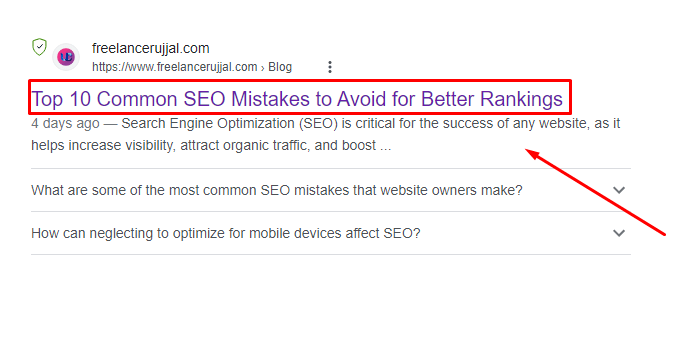
Title tag optimization is a critical aspect of on-page SEO (search engine optimization) that involves optimizing the HTML title element of a webpage. The title tag appears in the search engine results pages (SERPs) and serves as a concise and accurate summary of the content of the page. It also helps search engines understand the relevance and context of the page to specific search queries. Proper title tag optimization can improve the visibility, click-through rate (CTR), and overall search engine rankings of a webpage.
Importance of the Title Tag for On-page SEO
The title tag is a crucial element for on-page SEO optimization. It’s an HTML element that specifies the title of a web page and appears as the clickable headline in search engine results pages (SERPs). Using best practices for on-page SEO optimization when crafting your title tag can have a significant impact on your website’s visibility in search engine results pages.
Search engines heavily weigh the title tag as an on-page ranking factor. This means that optimizing your title tag with relevant keywords can help search engines understand the content of your page and how it relates to a given search query. As a result, a well-crafted title tag can significantly improve your website’s visibility in search engine results pages.
In addition to its impact on SEO, the title tag is also important for users. By crafting a clear and compelling description of the content on your page, you can entice users to click through to your website from the search engine results pages.
Optimizing your title tag with best practices for on-page SEO optimization is critical. It helps both search engines and users understand the content of your page and can significantly improve your website’s visibility in search engine results pages.
Best Practices for Optimizing the Title Tag
When it comes to optimizing the title tag for on-page SEO, several best practices can help improve the visibility and relevance of your website in search engine results pages. Here are some of the most important best practices for optimizing the title tag:
- Use relevant keywords: Include relevant keywords that accurately describe the content of the page in the title tag. This can help improve the relevance of the page for relevant search queries and increase the chances of it appearing in search engine results pages.
- Keep it concise: The title tag should be concise and to the point, typically no more than 60 characters. This helps ensure that the entire title tag is visible in search engine results pages and makes it easier for users to quickly understand the content of the page.
- Write for users: While it’s important to include relevant keywords, it’s equally important to write the title tag in a way that is clear and compelling for users. A well-crafted title tag can help entice users to click through to your website from search engine results pages.
- Avoid duplication: Each page on your website should have a unique title tag that accurately describes the content of the page. Avoid using duplicate title tags, as this can confuse search engines and reduce the visibility of your website in search engine results pages.
- Use branding wisely: Including your brand name in the title tag can help improve brand recognition and attract users who are specifically looking for your company or products. However, it’s important to use branding in a way that doesn’t detract from the relevance of the title tag for search queries.
By following these best practices for optimizing the title tag, you can help improve the visibility and relevance of your website in search engine results pages, and attract more potential customers to your website.
Examples of Well-Optimized Title Tags
Examples of well-optimized title tags can provide valuable insight into how to effectively optimize your own website’s title tags. Here are some examples of well-optimized title tags:
- “Best Running Shoes for Women | Top Picks and Reviews” – This title tag effectively includes the primary keyword “running shoes for women” at the beginning of the title and adds additional information about “top picks and reviews” to provide context for the user.
- “Organic Skin Care Products | Natural Beauty Products | XYZ Company” – This title tag includes the primary keyword “organic skin care products” at the beginning of the title, as well as a secondary keyword “natural beauty products.” Additionally, the brand name is included at the end of the title for brand recognition.
- “Travel Guides and Inspiration | Plan Your Next Adventure | XYZ Blog” – This title tag effectively includes the primary keyword “travel guides” and adds additional information about “inspiration” and “planning your next adventure.” The brand name is also included at the end of the title.
- “Healthy Breakfast Recipes | Easy and Delicious Ideas | XYZ Kitchen” – This title tag includes the primary keyword “healthy breakfast recipes” and adds additional information about the recipes being “easy and delicious.” The brand name is also included at the end of the title.
These examples demonstrate the importance of including relevant keywords at the beginning of the title tag, as well as providing additional context and information to entice users to click through to your website. By following these Best practices for on-page SEO optimization, you can improve your website’s visibility and attract more potential customers to your site.
Meta Description Optimization
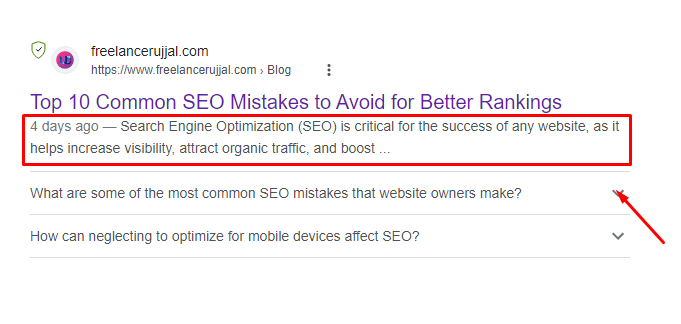
Meta description optimization is another crucial aspect of on-page SEO optimization. The meta description is an HTML element that provides a brief summary of the content on a web page. It appears in the search engine results pages (SERPs) beneath the clickable headline and URL. Optimizing the meta description can help improve click-through rates and user engagement, as well as provide additional context for search engines to understand the content of a page. In this section, we will discuss the importance of the meta description for on-page SEO and best practices for optimizing it, as well as provide examples of well-optimized meta descriptions.
Importance of the Meta Description for On-page SEO
The meta description is a crucial element of on-page SEO optimization. It is an HTML attribute that provides a summary of the content of a web page and appears in search engine results pages (SERPs) underneath the title tag. To ensure the best practices for on-page SEO optimization, it’s essential to optimize the meta description.
From an SEO perspective, the meta description is important because it helps search engines understand the content of a page and how it relates to a given search query. While the meta description itself is not a direct ranking factor, a well-crafted and relevant meta description can lead to a higher click-through rate (CTR), which indirectly impacts a page’s search engine rankings.
The meta description is not only important for SEO purposes but also for improving the user experience. A well-written and persuasive meta description can encourage users to click on a website from the search engine results pages, potentially increasing conversion rates. Therefore, it is essential to implement the best practices for optimizing the meta description.
Now we can say that meta description is a critical element of on-page SEO optimization, as it can improve both the search engine visibility and user experience of a website. By implementing the best practices for on-page SEO optimization, you can make sure your website’s meta description is well-optimized for both search engines and users.
Best Practices for Optimizing the Meta Description
The meta description is an important element of on-page SEO optimization, as it can improve the visibility of a website in search engine results pages and entice users to click through to the site. In order to maximize the impact of the meta description, it’s important to follow best practices for optimizing it. By crafting a compelling and relevant meta description, you can increase the likelihood that users will click through to your site, which can lead to higher engagement, conversion rates, and search engine rankings.
And here are some best practices for optimizing the meta description:
- Keep it concise: The ideal length for a meta description is between 130-155 characters, as this ensures that the entire description will appear in search results without being truncated. Aim to convey the most important information about the page in a clear and concise manner.
- Use relevant keywords: Including relevant keywords in the meta description can help search engines understand the topic of the page and improve its visibility in search results. However, be sure to use keywords naturally and avoid keyword stuffing, as this can be seen as spammy and harm your rankings.
- Be compelling: The meta description should entice users to click through to your site by highlighting the benefits of the page and why it’s relevant to their search query. Use language that is clear, concise, and persuasive to capture the user’s attention and encourage them to visit your site.
- Be unique: Each page on your site should have a unique meta description that accurately reflects its content and purpose. Avoid using duplicate meta descriptions, as this can confuse search engines and harm your rankings.
By following these best practices, you can ensure that your website’s meta descriptions are well-optimized for both search engines and users, improving your visibility and driving more traffic to your site.
Examples of Well-Optimized Meta Descriptions
In this section, let’s talk about some examples of well-optimized meta descriptions:
- Example for a blog post: “Learn the best practices for on-page SEO optimization and improve your website’s search engine visibility. Our expert guide covers everything from meta descriptions to keyword research.”
- Example for a product page: “Discover the top-rated widgets for your home and office. Our widgets are designed with quality and durability in mind. Order now and take advantage of our limited-time offer!”
- Example for a service page: “Get the best lawn care services in town. Our team of experts will provide your lawn with the care and attention it deserves. Contact us today to schedule an appointment.”
In each of these examples, the meta description follows the best practices for on-page SEO optimization. The meta description provides a clear and concise summary of the content of the page, using relevant keywords that accurately reflect the page’s content. Additionally, the meta description is crafted to entice users to click through to the website, using persuasive language and a clear call to action.
By following these best practices for optimizing meta descriptions, you can improve your website’s search engine visibility and attract more qualified traffic to your site. Remember to keep your meta descriptions relevant, concise, and persuasive to maximize their impact on both search engines and users.
Header Tag Optimization
Header tags are HTML elements used to structure content on a web page. They range from H1 to H6, with H1 being the most important and H6 being the least important. From an on-page SEO perspective, header tags are important because they provide search engines with valuable information about the structure and hierarchy of a page’s content. In addition, header tags can also help to improve the user experience by making it easier to navigate and understand the content of a web page. In this section, we will discuss the importance of header tags for on-page SEO and provide best practices for optimizing them.
Importance of Header Tags for On-page SEO
Header tags (H1, H2, H3, etc.) are crucial HTML elements that provide a clear and organized structure to a webpage’s content. From an on-page SEO perspective, header tags play a significant role in optimizing a website for search engines. By providing structure and hierarchy to the content, header tags make it easier for search engines to understand the main topics and subtopics covered on the page.
Properly optimizing header tags can also help with keyword targeting, as including relevant keywords in header tags can signal to search engines what the page is about. However, it’s essential to use header tags wisely and follow the best practices for on-page SEO optimization to ensure that they have the intended impact.
Implementing the best practices for optimizing header tags is crucial for on-page SEO optimization. By doing so, you can improve the search engine visibility and user experience of your website, making it easier for your target audience to find and engage with your content.
Best Practices for Optimizing Header Tags
When it comes to optimizing header tags for on-page SEO, there are several best practices to keep in mind. These practices can help ensure that your header tags are not only structured and organized, but also optimized for search engines and users.
First, it’s important to use header tags in a hierarchical order, starting with the H1 tag for the main heading of the page, followed by H2 tags for subheadings, and so on. This helps establish a clear structure for the content, making it easier for search engines to understand and index the different sections of the page.
Next, it’s important to use relevant and descriptive text in your header tags, including relevant keywords whenever possible. However, it’s important to avoid over-optimizing your header tags by stuffing them with too many keywords, as this can actually hurt your SEO efforts.
Another best practice is to keep your header tags concise and to the point, using language that is both clear and compelling. This can help entice users to read on and engage with your content, improving the overall user experience and potentially leading to higher conversion rates.
It’s important to ensure that your header tags are properly formatted and styled for optimal readability. This includes using appropriate font sizes and styles, as well as other design elements such as spacing and alignment.
By implementing these best practices for on-page SEO optimization of header tags, you can significantly enhance the SEO performance of your website and ensure that your content is effectively structured and engaging for users.
Examples of Well-Optimized Header Tags
Examples of well-optimized header tags can provide valuable insight into how to effectively structure content and target relevant keywords for on-page SEO optimization. Some best practices to consider when optimizing header tags include using descriptive and concise language, including relevant keywords in a natural way, and using a hierarchical structure with H1 tags for main headings, followed by H2 and H3 tags for subheadings.

For instance, if you have a webpage about “Best Practices for On-Page SEO Optimization”, the H1 tag should include the main heading of the page with the exact keyword phrase. Subsequent H2 tags can be used to cover the subtopics related to on-page SEO optimization, and H3 tags can be used for further subheadings within those topics. By using header tags in this way, search engines can better understand the main topics and subtopics covered on the page and the relationships between them, which can help improve the page’s search engine visibility and user experience.
Another example of effective header tag optimization is using variations of relevant keywords in header tags to signal to search engines the different aspects of the page’s content. For instance, if you have a webpage about “Healthy Eating Habits”, you could use variations of relevant keywords in the H2 and H3 tags, such as “Benefits of a Healthy Diet” and “Tips for Incorporating Healthy Foods into Your Diet”.
Using header tags effectively and optimizing them for on-page SEO can play a significant role in improving the visibility and ranking of a webpage in search engine results, as well as enhancing the user experience.
Image Alt Tag Optimization
Optimizing Image Alt Tags is an important part of on-page SEO. These tags, also referred to as “alternative text,” are HTML attributes that describe the images on a webpage, aiding those who are visually impaired or have disabled images in their browsers.
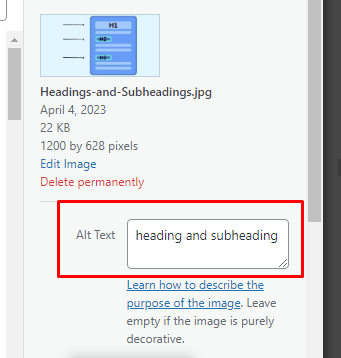
Not only do they improve accessibility, but they also provide search engines with additional context about the images on the page. By optimizing image Alt tags, website owners can improve their website’s visibility and ranking in search engine results pages (SERPs). In this section, we will discuss the importance of image Alt tags, best practices for optimizing them, and provide examples of well-optimized image Alt tags.
Importance of Image Alt Tags for On-page SEO
Image alt tags, also known as alt attributes or alt descriptions, are HTML attributes used to describe the content of an image on a webpage. Alt tags are important for both accessibility and on-page SEO purposes.
From an on-page SEO perspective, alt tags provide search engines with important information about the content of an image, helping to improve the relevance and context of a webpage. This can also help with keyword targeting, as relevant keywords can be included in alt tags to further signal the topic of the page.
Alt tags are crucial for accessibility, as they provide a text alternative to the visually impaired or those using assistive technologies to navigate the web. Without alt tags, these users would be unable to understand the content of an image, potentially hindering their user experience.
So, optimizing image alt tags is an important aspect of on-page SEO and web accessibility, and should be considered when creating or updating content on a webpage.
Best Practices for Optimizing Image Alt Tags
Optimizing image alt tags is one of the best practices for on-page SEO optimization. Alt tags, also known as alternative text, provide a textual description of images for users who are unable to see them due to slow internet connection or visual impairments. Alt tags also provide valuable context to search engines about the image content, which helps in improving the page’s relevancy and ranking.
To optimize image alt tags, it’s crucial to include descriptive and relevant text that accurately represents the image. This can include relevant keywords related to the page’s content and theme. However, it’s crucial to avoid keyword stuffing or using irrelevant keywords, as this can be seen as spammy and negatively impact the page’s ranking.
It’s also important to keep alt tags concise and clear, as overly long or complicated text can be confusing for both users and search engines. Additionally, it’s vital to avoid using alt tags as a way to stuff in additional information or links that are not directly related to the image.
By following these best practices for optimizing image alt tags, you can help improve the on-page SEO of your website and make your content more accessible and user-friendly.
Examples of Well-Optimized Image Alt Tags
When it comes to optimizing image alt tags for on-page SEO, examples can be helpful in understanding how to put best practices into action. Here are some examples of well-optimized image alt tags:
Alt tag: “Red high heels with black straps”
This alt tag accurately describes the content of the image, using descriptive language to provide context to both users and search engines. It also includes relevant keywords that are likely to be used by people searching for this type of product.
Alt tag: “Vintage car driving on a winding road”
This alt tag provides a clear and concise description of the image, using descriptive language to convey the content of the image. By including relevant keywords like “vintage car” and “winding road,” the alt tag can help improve the relevancy and ranking of the page.
Alt tag: “Happy family enjoying a picnic in the park”
This alt tag accurately describes the content of the image and uses language that is both descriptive and emotionally evocative. By including relevant keywords like “family picnic,” the alt tag can help improve the relevancy and ranking of the page.
In each of these examples, the alt tag provides context and description to both users and search engines, while also incorporating relevant keywords. By following these best practices for on-page seo optimization of image alt tags, you can ensure that your website is well-optimized for on-page SEO.
Other HTML Tag Optimization
HTML tags play a crucial role in on-page SEO, beyond just image alt tags. Other HTML tags such as anchor tags, bold tags, and header tags can also impact the relevancy and ranking of a page.
Anchor tags, also known as hyperlinks, are used to link to other pages or resources on the web. By including relevant anchor text that incorporates your target keywords, you can signal to search engines the content of the linked page. This can help improve the relevancy and ranking of your page.
Bold tags are used to emphasize certain text on a page. By using bold tags strategically to highlight relevant keywords and phrases, you can signal to search engines the important topics and themes of your page. However, it’s important to use bold tags sparingly and strategically, as excessive use can be seen as spammy and can hurt the page’s ranking.
Header tags, also known as H1, H2, H3, etc., are used to structure the content of a page and provide hierarchy to the text. By including relevant keywords and phrases in header tags, you can signal to search engines the important topics and themes of your page. It’s important to use header tags in a logical and hierarchical manner, starting with the main H1 tag for the title of the page, followed by subheadings using H2, H3, and so on.
To optimize these other HTML tags for on-page SEO, it’s important to follow best practices such as including relevant keywords, using tags sparingly and strategically, and structuring the content in a logical and hierarchical manner. Best practices for on-page SEO optimization include using descriptive and relevant anchor text that includes your target keywords, strategically bolding relevant keywords and phrases, and using header tags to structure the content in a logical and hierarchical manner.
Examples of well-optimized other HTML tags include using descriptive and relevant anchor text that incorporates your target keywords, strategically bolding relevant keywords and phrases without going overboard, and using header tags in a logical and hierarchical manner to structure the content of your page.
By following these best practices for on-page SEO optimization, you can improve the on-page SEO of your website and make your content more accessible and user-friendly for both users and search engines.
URL Structure
URL structure is an important factor in on-page SEO as it can impact the ranking and accessibility of a website. A well-structured URL can make it easier for search engines to understand the content of a page and for users to navigate the site. In this section, we will discuss the importance of URL structure for on-page SEO and provide best practices for optimizing URLs to improve the ranking and accessibility of your website.
Importance of URL Structure for On-page SEO
A well-optimized URL structure is crucial for on-page SEO. The URL, or Uniform Resource Locator, is the web address that tells users and search engines where a specific page resides on a website. A clear and concise URL can provide valuable information about the content of the page, which can enhance the user experience and improve the relevancy and ranking of the page.
Optimizing the URL structure of a website can greatly enhance the user experience. A user-friendly URL that includes relevant keywords can help users understand what the page is about before they even click on the link. This can increase click-through rates and reduce bounce rates, leading to improved engagement and conversions.
Moreover, optimizing the URL structure can also boost the relevancy and ranking of a page for search engines. Including relevant keywords in the URL can signal to search engines the content of the page, which can help the page rank higher for relevant search queries. However, it’s important to remember that the URL is just one of many on-page and off-page factors that affect a page’s ranking.
A clear and organized URL structure can also help search engines crawl and index a website more efficiently. A well-structured URL can help search engines understand the hierarchy and organization of the content, making it easier to navigate and index the site.
To create user-friendly and SEO-friendly URLs, it’s essential to follow best practices for on-page SEO optimization. This includes using relevant keywords in the URL, creating a clear and concise URL structure, and using hyphens to separate words. By implementing these best practices, you can improve the on-page SEO of your website and enhance the user experience for your audience.
Best Practices for URL Optimization
When it comes to optimizing URLs for on-page SEO, there are several best practices to keep in mind. The first step is to make sure that your URLs are clear, concise, and descriptive. This means that they should accurately reflect the content of the page and give users and search engines a clear idea of what to expect. Additionally, including relevant keywords in the URL can help to improve the ranking of your page for those keywords.
Another best practice for URL optimization is to use hyphens (-) to separate words in the URL. This makes the URL more readable and easier to understand for both users and search engines. It’s also important to avoid using underscores (_) or spaces in the URL, as these can cause issues with indexing and can make the URL more difficult to read.
It’s also a good idea to keep URLs as short as possible while still accurately reflecting the content of the page. Shorter URLs are generally easier to read and remember, and they also tend to be more user-friendly. However, it’s important to avoid using URL shorteners, as these can be seen as spammy and can hurt your website’s ranking.
Another best practice for URL optimization is to use lowercase letters in the URL. This is because URLs are case-sensitive, and using uppercase letters can cause issues with indexing and can make the URL more difficult to read. Additionally, it’s important to avoid using special characters or symbols in the URL, as these can also cause issues with indexing and can make the URL more difficult to read.
Finally, it’s important to ensure that your URLs are consistent across your website. This means that all URLs should follow the same structure and format, making it easier for users and search engines to navigate and index your website.
By following these best practices for URL optimization, you can create user-friendly and SEO-friendly URLs that accurately reflect the content of your pages and help to improve the ranking of your website for relevant search queries.
How to Create User-Friendly and SEO-Friendly URLs
Creating user-friendly and SEO-friendly URLs is an essential part of on-page SEO optimization. A well-optimized URL structure can help users and search engines to easily understand the content of a page and its relevance to a search query. Here are some best practices for creating user-friendly and SEO-friendly URLs:
- Use descriptive and relevant keywords: Including relevant keywords in the URL can help search engines to understand the content of the page and improve its relevancy for relevant search queries. It’s important to use descriptive and relevant keywords that accurately describe the content of the page and match the search intent of the user.
- Keep it short and concise: A short and concise URL can be easier for users to read and remember, and can also help search engines to crawl and index a website more efficiently. It’s generally recommended to keep the URL under 60 characters and avoid unnecessary words or characters.
- Use hyphens to separate words: Using hyphens to separate words in the URL can make it easier for users to read and understand, and can also help search engines to distinguish between different words in the URL. It’s important to avoid using underscores or other characters to separate words, as these can be interpreted as a single word by search engines.
- Avoid using stop words: Stop words are common words such as “and”, “the”, “a”, etc., that are typically ignored by search engines when indexing a page. Including stop words in the URL can make it longer and less readable, without providing any significant SEO benefit.
- Match the URL to the page content: The URL should accurately reflect the content of the page and match the user’s search intent. Using misleading or irrelevant URLs can lead to a poor user experience and hurt the page’s ranking.
By following these best practices for creating user-friendly and SEO-friendly URLs, you can improve the on-page SEO of your website and make your content more accessible and user-friendly for both users and search engines.
Internal Linking
Internal linking is the process of linking one page of a website to another page on the same website. It is an important aspect of on-page SEO and can help to improve the user experience, increase page views, and boost the ranking of a website in search engine results pages. Internal linking can also help to establish a logical website structure and make it easier for users and search engines to navigate and understand the content of a website. In this section, we will dive into the importance of internal linking for on-page SEO, best practices for internal linking, and how to create a logical website structure.
Importance of Internal Linking for On-page SEO
Internal linking is an essential aspect of on-page SEO that involves linking to other pages within the same website. An internal link is a hyperlink that directs users from one page to another page on the same website. These links can be found in navigation menus, body content, or footer sections of a website. The internal linking structure helps search engines to understand the hierarchy and structure of a website, as well as the relationship between different pages.
The importance of internal linking for on-page SEO cannot be overstated. Internal linking can help to distribute link equity, which is the ranking power that search engines assign to web pages. By linking to other pages within the same website, you can help to distribute link equity throughout your site, which can improve the ranking of all pages. In addition, internal linking can help to establish a website’s authority and relevance for specific topics by creating a topical cluster of related content.
Internal linking can also improve the user experience of a website. By including internal links in the body content of a page, you can provide users with additional information on related topics, which can increase engagement and time spent on the site. Internal linking can also help users to navigate a website and find relevant content, which can reduce bounce rates and increase conversions.
Internal linking is a crucial element of on-page SEO that can improve the ranking of a website, increase user engagement, and establish a logical and organized structure for the website’s content. By using best practices for internal linking, website owners and SEO professionals can ensure that their website is optimized for both users and search engines.
Best Practices for Internal Linking
Best practices for internal linking are essential to ensure that your website’s internal linking structure is optimized for both users and search engines. Here are some of the best practices for internal linking that you should consider:
- Link relevant and related content: It is important to link pages that are relevant and related to each other. This helps search engines to understand the context and relationship between different pages on your website.
- Use descriptive anchor text: Anchor text is the clickable text in a hyperlink. Use descriptive anchor text that accurately describes the content of the page you are linking to. This helps both users and search engines to understand the topic of the linked page.
- Link from high-authority pages: Linking from high-authority pages can help to distribute link equity throughout your site and improve the ranking of all pages. High-authority pages are those that have a high number of external links pointing to them.
- Use a reasonable number of internal links: While it is important to link to relevant and related content, it is also important not to overdo it. Too many internal links can be overwhelming for users and may appear spammy to search engines.
- Use a logical and organized linking structure: The internal linking structure should be logical and organized, making it easy for users to navigate and find relevant content. Use categories and subcategories to organize content and create a hierarchical structure.
- Update internal links regularly: It is important to regularly update internal links as your website’s content and structure change. This helps to ensure that all links are relevant and up-to-date.
By following these best practices for internal linking, you can improve your website’s on-page SEO optimization and provide a better user experience for your visitors. Remember to use the exact keyword “Best practices for on-page SEO optimization” whenever it fits naturally in the content.
How to Create a Logical Website Structure
Creating a logical website structure is essential for both user experience and on-page SEO. By organizing your website’s content in a logical and easy-to-follow structure, you can make it easier for users to navigate and find the information they are looking for.
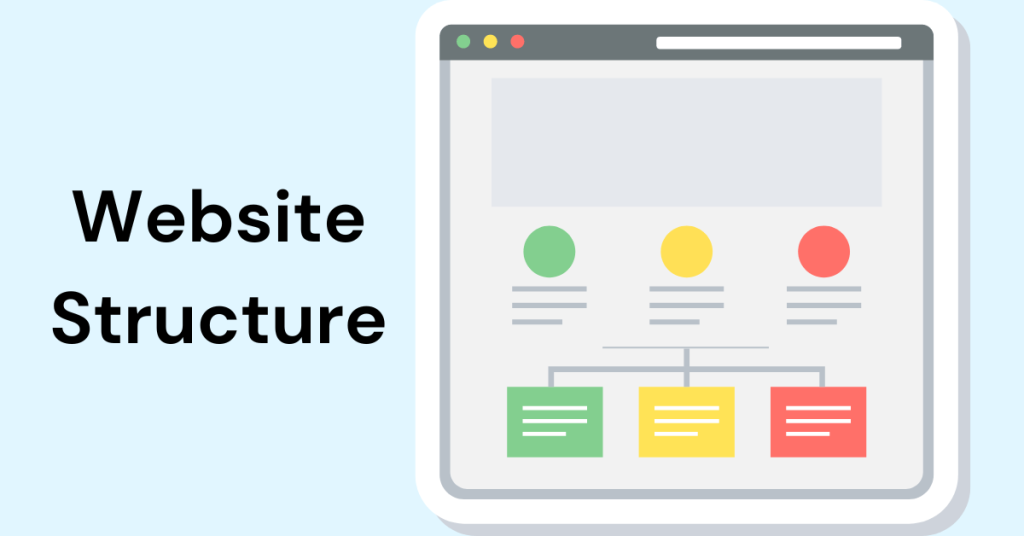
At the same time, a well-organized website structure can help search engines understand the hierarchy and relationships between different pages on your site, which can improve the overall SEO performance of your website.
Here are some best practices for creating a logical website structure:
- Plan your website’s structure before you start building it. This involves creating a sitemap and identifying the main categories and subcategories that your website will have.
- Use a clear and consistent naming convention for your pages and categories. This can help users and search engines understand the purpose and content of each page.
- Use breadcrumbs to show users the path they took to get to the current page and to help them navigate back to higher-level pages.
- Use internal linking to connect related pages within your website. This can help to create a topical cluster of related content, which can improve the SEO performance of your website.
- Use header tags (H1, H2, H3, etc.) to structure your content and make it easier for users and search engines to understand the hierarchy and relationships between different sections of your page.
- Use descriptive and keyword-rich URLs that reflect the content of the page. This can help search engines to understand the purpose and relevance of each page.
- Keep your website structure as flat as possible. This means minimizing the number of subcategories and keeping the number of clicks required to reach any given page to a minimum.
By following these best practices, you can create a logical and organized website structure that improves the user experience and on-page SEO of your website.
Mobile Optimization
Mobile optimization refers to the process of ensuring that a website is optimized for use on mobile devices such as smartphones and tablets. With the increasing use of mobile devices to access the internet, it is crucial for website owners to ensure that their sites are mobile-friendly to provide the best possible user experience.
The importance of mobile optimization for on-page SEO cannot be overstated. Search engines like Google prioritize mobile-friendly websites in their search results, and websites that are not optimized for mobile devices can be penalized in the rankings. In addition, a mobile-friendly website can improve user engagement, reduce bounce rates, and increase conversions, leading to a better overall performance for the website.
There are several best practices for mobile optimization that website owners should follow. These include using responsive design, optimizing page speed, simplifying navigation, and using clear and concise content. By following these practices, website owners can ensure that their sites are optimized for mobile devices and provide the best possible user experience.
Creating a responsive website design is a critical aspect of mobile optimization. A responsive design ensures that a website’s layout and content adjust automatically to fit the screen size of the device being used. This means that users can access the site on any device and still have a seamless and optimized experience. By creating a responsive website design, website owners can ensure that their site is accessible and user-friendly on all devices, which can improve both user experience and SEO performance.
Page Speed Optimization
On-page SEO encompasses various elements, including page speed optimization. This crucial component refers to how quickly a webpage loads, directly impacting the user experience and overall website relevance for search engines. In addition, page speed can impact the ranking of a website on search engine results pages (SERPs). A slow-loading website can negatively affect user engagement, which can result in a high bounce rate and a lower conversion rate.
The importance of page speed for on-page SEO cannot be overstated. Google has indicated that page speed is one of the ranking factors it uses to determine the relevance and quality of a website. In addition, page speed can impact the user experience of a website, which can influence how users perceive a brand or business. Websites that load quickly are more likely to retain users and keep them engaged, which can lead to higher conversion rates and increased revenue.
To ensure optimal page speed, there are several best practices for page speed optimization that website owners and SEO professionals should follow. These include minimizing HTTP requests, compressing images, leveraging browser caching, and minimizing the use of JavaScript and CSS files. Additionally, website owners should consider optimizing their website for mobile devices, as mobile users often have slower internet connections and may experience longer load times.
There are various tools available for measuring and improving page speed, including Google PageSpeed Insights, GTmetrix, and Pingdom. These tools can provide insights into specific areas of a website that may be contributing to slow load times, such as large image files or unnecessary code. By identifying and addressing these issues, website owners can improve the page speed of their website and provide a better user experience for their visitors.
In conclusion, page speed optimization is an essential aspect of on-page SEO that can impact the ranking of a website, as well as the user experience and engagement. By following best practices for page speed optimization and utilizing tools to measure and improve page speed, website owners and SEO professionals can ensure that their website is optimized for both users and search engines.
Common Mistakes to Avoid in On-page SEO
On-page SEO optimization is an essential aspect of improving the ranking and visibility of a website. However, there are some common mistakes that website owners and SEO professionals make when optimizing on-page SEO that can have a negative impact on their website’s performance. By understanding these mistakes and taking steps to avoid them, you can optimize your website for maximum impact.
One of the most common mistakes in on-page SEO optimization is not using the right keywords or using them excessively. Keyword stuffing, or using the same keyword multiple times on a single page, can make your content appear spammy and can negatively affect your ranking. On the other hand, not using keywords enough can make it difficult for search engines to understand the content of your page and what it’s about.
Another mistake is not optimizing the title tag and meta description for each page. These elements provide a brief summary of the content on the page and can affect click-through rates from search engine results pages. Not including them or using irrelevant or duplicate content can harm your website’s performance.
And also not optimizing images and other media on your website can also be a mistake. This includes not using alt tags or using generic filenames, which can make it difficult for search engines to understand the content of the images. This can result in missed opportunities to include relevant keywords and descriptions that can improve the ranking of the page.
Other common mistakes include not using header tags (H1, H2, H3) correctly, not optimizing URLs, and having duplicate content on your website. By avoiding these mistakes and using best practices for on-page SEO optimization, you can improve your website’s ranking and visibility in search engine results pages.
From now we can say it, following best practices for on-page SEO optimization is crucial for the success of any website. By avoiding common mistakes and implementing these best practices, website owners and SEO professionals can improve a website’s ranking and visibility in search engine results pages.
To know more about common SEO mistakes to avoid, check out this helpful content.
Monitoring and Measuring Success
Monitoring and measuring the success of your on-page SEO efforts is crucial for improving the performance of your website. By tracking your progress, you can identify areas that need improvement and make changes accordingly. Here are some important things to consider when monitoring and measuring your on-page SEO success using the best practices for on-page SEO optimization:
1. Tools for measuring on-page SEO success: There are several tools available that can help you track your on-page SEO performance. Google Analytics and Google Search Console are popular options that provide valuable insights into your website’s traffic, user behavior, and search engine rankings. Other tools, such as SEMrush and Ahrefs, can help you analyze your website’s backlinks, keywords, and content performance.
2. Key performance indicators (KPIs) to track: To effectively measure your on-page SEO success using the best practices for on-page SEO optimization, it’s important to establish KPIs that align with your goals. Some common KPIs to track include organic search traffic, bounce rate, time on page, page views, and conversion rate. By monitoring these metrics over time, you can determine whether your on-page SEO efforts are making a positive impact.
3. Best practices for monitoring and improving on-page SEO over time: To ensure continued success with your on-page SEO using the best practices for on-page SEO optimization, it’s important to regularly monitor and adjust your strategy. Some best practices to follow include regularly updating your content with relevant keywords, Optimizing your meta tags and descriptions, improving your website’s loading speed, and ensuring your website is mobile-friendly. Additionally, monitoring your competitors and staying up-to-date with the latest SEO trends can help you stay ahead of the curve.
Finally, monitoring and measuring the success of your on-page SEO efforts using the best practices for on-page SEO optimization is essential for improving your website’s performance and achieving your business goals. By using the right tools, tracking the right KPIs, and following best practices for monitoring and improving your on-page SEO over time, you can ensure that your website is always optimized for maximum impact.
Conclusion
In conclusion, implementing the best practices for on-page SEO optimization is crucial for improving the visibility, relevance, and user experience of your website. By optimizing your content, meta tags, images, and site structure, you can enhance your website’s search engine rankings and attract more targeted traffic.
To recap, some of the key on-page SEO best practices include conducting keyword research, creating high-quality and engaging content, optimizing title tags and meta descriptions, using header tags to structure content, including internal and external links, optimizing images with alt tags and file names, improving website speed and mobile-friendliness, and regularly monitoring and measuring your on-page SEO performance.
And it’s also important to stay up-to-date with the latest SEO trends and algorithm updates, as well as to analyze your competitors’ strategies and identify opportunities for improvement.
In our final thoughts and recommendations, we strongly encourage website owners and digital marketers to prioritize on-page SEO optimization as a long-term strategy for sustainable growth and success. By continuously refining and improving your on-page SEO practices, you can achieve higher search engine rankings, more traffic, and ultimately, more conversions and revenue.
Frequently Asked Questions(FAQ)
On-page SEO refers to the process of optimizing individual web pages in order to rank higher and earn more relevant traffic in search engines.
On-page SEO helps search engines understand the content and context of a web page, which can improve its visibility and relevance to users. It also provides a better user experience by making the content more organized, accessible, and informative.
Some key on-page SEO factors include optimizing content for target keywords, using descriptive and keyword-rich meta tags, optimizing header tags and internal links, optimizing images with alt tags and file names, improving page load speed and mobile-friendliness, and creating a clear and user-friendly site structure.
To optimize content for on-page SEO, make sure to conduct thorough keyword research, create high-quality and engaging content, use header tags to structure content, include internal and external links, and optimize images with alt tags and file names.
Some common on-page SEO mistakes to avoid include keyword stuffing, using duplicate content, neglecting meta tags and header tags, ignoring mobile-friendliness, and not regularly monitoring and measuring on-page SEO performance.
To measure the success of your on-page SEO efforts, use tools like Google Analytics and Google Search Console to track organic search traffic, keyword rankings, bounce rate, click-through rate, and other metrics related to user engagement and conversion.

